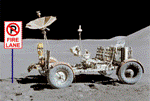Law, College of

Space Law Documents
Document Type
Article
Date of this Version
1995
Abstract
In responding to the political and military challenges of the Cold War, and the urge to explore and exploit outer space, the United States developed a capable fleet of space transportation systems for carrying cargo and people into space, and for ensuring a credible strategic nuclear deterrent. These systems are owned and managed by the National Aeronautics and Space Administration, the Department of Defense, and private industry. In recent years, increasing federal budget constraints, commercial competition from foreign launch firms, and a desire to continue an ambitious space program have created pressures within the United States to reduce the costs of access to space. Significantly lower space transportation costs would make the U.S. space industry more commercially competitive, foster the expansion and creation of new space markets, and ensure access to space for government payloads and manned missions. This report, prepared for the House Committee on Science, is the first in a broad assessment of the health and future prospects of the U.S. space transportation technology and industrial base. The report focuses on the Clinton Administration's National Space Transportation Policy, which was released last fall. It examines administration policy in light of the implementation plans prepared by NASA, DOD, and the Transportation and Commerce Departments. As the report notes, the new policy brings a welcome measure of order to the sometimes chaotic structure of U.S. space transportation activities. The policy also emphasizes the important contribution private industry can make to the direction and development of U.S. space transportation capabilities. However, an analysis of the policy and implementation plans also raises some issues that might be of interest to Congress as it debates space transportation legislation, oversight, and funding. These issues involve decisions on NASA and DOD development programs, the use of foreign launch vehicles and components, the conversion of excess long-range ballistic missiles for use as launch vehicles, and the new role of the private sector in space transportation research and development decision making. This report also identifies two issues omitted from the Administration's policy: the preservation of long-range ballistic missile capabilities after final production in 2005, and the perspective of lower industrial tier firms toward national space transportation policy. In undertaking this effort, the Office of Technology Assessment sought the contributions of a wide spectrum of knowledgeable individuals and organizations. Some provided information, others reviewed drafts. OTA gratefully acknowledges their contributions of time and intellectual effort. OTA also appreciates the help of NASA and the Defense, Transportation, and Commerce Departments. As with all OTA reports, the content of this report is the sole responsibility of OTA and does not necessarily represent the views of our advisors or reviewers.


Comments
OTA-ISS-620 (Washington, DC: U.S. Government Printing Office, May 1995).